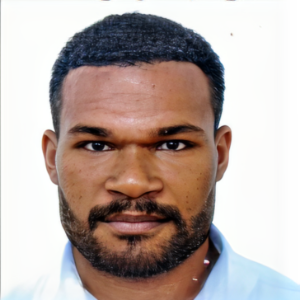Title : A baseline study of the presence of the radioactive Isotope Cs- 137 in the central province of Papua New Guinea
Abstract:
This study is aimed at identifying the artificially produced radioactive isotope Caesium-137 (137Cs) and determining its activity at specific sites across the landscape of the Central Province of Papua New Guinea. Central Province is one of the provinces in Papua New Guinea situated between 9° 30′south latitude and 147° 40′ east longitude. It occupies a total area of 29, 998 km2 (11, 582/sq mi) which lies over a geological formation comprising a sequence of dark cracking clays on greyer clays, silty- clay alluvium, clay alluvium and reddish brown soil. This work aims to establish the first baseline measurements of 137Cs concentration in soil collected from sites within the Central Province. Representative samples from various locations across the Central Province were collected and analysed. The activity was measured through gamma-ray spectroscopy using a 50 mm diameter Sodium Iodide (NaI) Scintillation detector. The detector was situated in a low- background environment consisting of a cylindrical lead shield of about 6 cm thickness to exclude unwanted ambient radioactivity. Details of the sample collections, preparations and gamma- ray spectroscopy analysis techniques are presented. Out of four sites including a control site, 54 soil samples were taken. Five soil samples from Pacific Adventist University had activity concentrations below the lowest limit of detection and one had an activity concentration equal to 0 while six samples had defined values of activity concentrations ranging from 0.163±1.228 to 0.817±0.248 Bq/kg. All twelve samples for NARI Laloki had defined values of activity concentrations with the range of 0.326±0.616 to 1.31±0.156 Bq/kg. Koitaki had one sample below the lowest limit of detection and all others had defined values of activity concentrations ranging from 0.163±1.228 to 1.963±0.105 Bq/kg. Varirata National Park had one sample below the lowest limit of detection and two samples had activity concentrations equal to 0 while nine samples had calculated activity concentrations ranging from 0.163±1.228 to 1.637±0.126 Bq/kg. The control site had two samples with activity concentrations below the lowest limit of detection while four samples had defined values of activity concentrations ranging from 0.163±1.228 to 0.983±0.207 Bq/kg. It can be concluded from this study that there are areas in the Central Province with measurable levels of the artificial radionuclide 137Cs although these levels are generally lower than some published data for other global sites.
Audience Take Away Notes
- Identify man-made radioactive isotopes in the soils within the terrestrial environment in the Central Province of Papua New Guinea.
- Determine the energy levels and activity concentration of isotopes found in the soil.
- Compare the radioisotopes found with other related global studies done
- Create a database for baseline data for future monitoring of radioactive levels in the environment.
- This research presentation is of great significance as it addresses the terrestrial environment in Papua New Guinea especially Soil Science and Agricultural Chemistry as well as Agricultural Safety and Health. Also, it is of potentially great importance as it provides useful information on the presence of radioisotopes and their concentrations in the terrestrial environmental of Papua New Guinea. If the terrestrial environment contains high levels of radioactive isotopes then measures may be taken to reduce the concentrations to improve the environment and minimize the negative impacts on consumers of environmental products. In addition, this research is significant because it provides an important contribution to new knowledge of radioisotopes and their concentrations baseline data for the terrestrial environment of Papua New Guinea.



